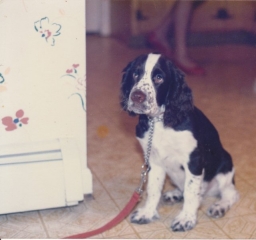The Most Valuable Training Tip For Your Dog!
Is leaving a rope or leash trailing from their collar whenever you are home and awake!
This means as long as you are there to supervise, your dog will have a leash or rope long enough for you to catch them quickly (outside expect to use a minimum of 20-50 feet). If you aren’t there to untangle the rope take it off!
If this seems like a strange or excessive notion let me go through the reasons why it is so important:
- Until your dog is reliable, physical follow through to get your dog to stop a behavior, or do a behavior is key. If you are just repeating yourself or trying to talk your dog into listening you will surely get unreliable results, if you get any results at all.
- Imagine you dog steals your shoe. Do you really think it is a good idea to chase them to get it back? Now not only do they have a fine shoe, but also a great game of chase me. If you can step on a rope or leash, you can stop that problem quickly. If you are housebreaking your dog the leash/rope keeps them insight when not crated. Now imagine you are outside and your dog decides to run across the street to visit a neighbor or chase a squirrel. Without a long line you are in some serious trouble if a car is coming at the same time. I know people want their dogs to enjoy the freedom of running around, but until your dog is truly reliable (you know this when your dog is close to a year and has consistently stopped on command even with the most tempting distractions). Please be honest about your dog’s reliability. The number of dogs killed and injured by people’s good intentions, but naïve expectations is staggering and heartbreaking.
- If you make a habit of using the training line sometimes, and regularly test your dog to “see if your dog will listen”, you are inadvertently training your dog to know the difference between the line being on or off. As much as it is important to practice training your dog, it is equally IMPORTANT TO USE TRAINING WHENEVER YOU NEED IT THROUGHOUT THE DAY. If you put a leash on to do training, take it off and hope for the best, you will probably end up with a dog that only listens when the rope is on. Practice leaving the rope on just to get your dog to forget about it and accept it being there.
- Realize dogs, and particularly puppies, phase in and out of cooperativeness. Just because a dog has listened some of the time does not imply reliability. This is especially true with puppies whose developmental stages cause them to retest you on issues you thought you had solved. Very young puppies tend to not run off because they are babies and are afraid to stray to far from safety, but almost all puppies get worse with regards to running away, before they get better.
- If you don’t have a rope or leash trailing you handicap all your commands and sabotage getting reliability. You make it difficult or impossible to stop behaviors you need to interrupt. Just because the rope is an inconvenience and requires supervision and untangling, does not by any stretch of the imagination out weight the benefits.
- The rope or leash should be something you don’t mind getting chewed or soiled. You can make your own with rope and bolt snap (the hardware at the end of a leash). Soaking the rope in bitter apple slows down chewing, but for a real hardcore chew fiend use a piece of cable (the wire coated in plastic used for tying dogs outside).
To wean the trailing line away you will need to be patient and learn how to train your dog. Please don’t assume more control than you really have outside. If you have any doubt simply keep using the line for outside control and to avoid harm to your pet.


